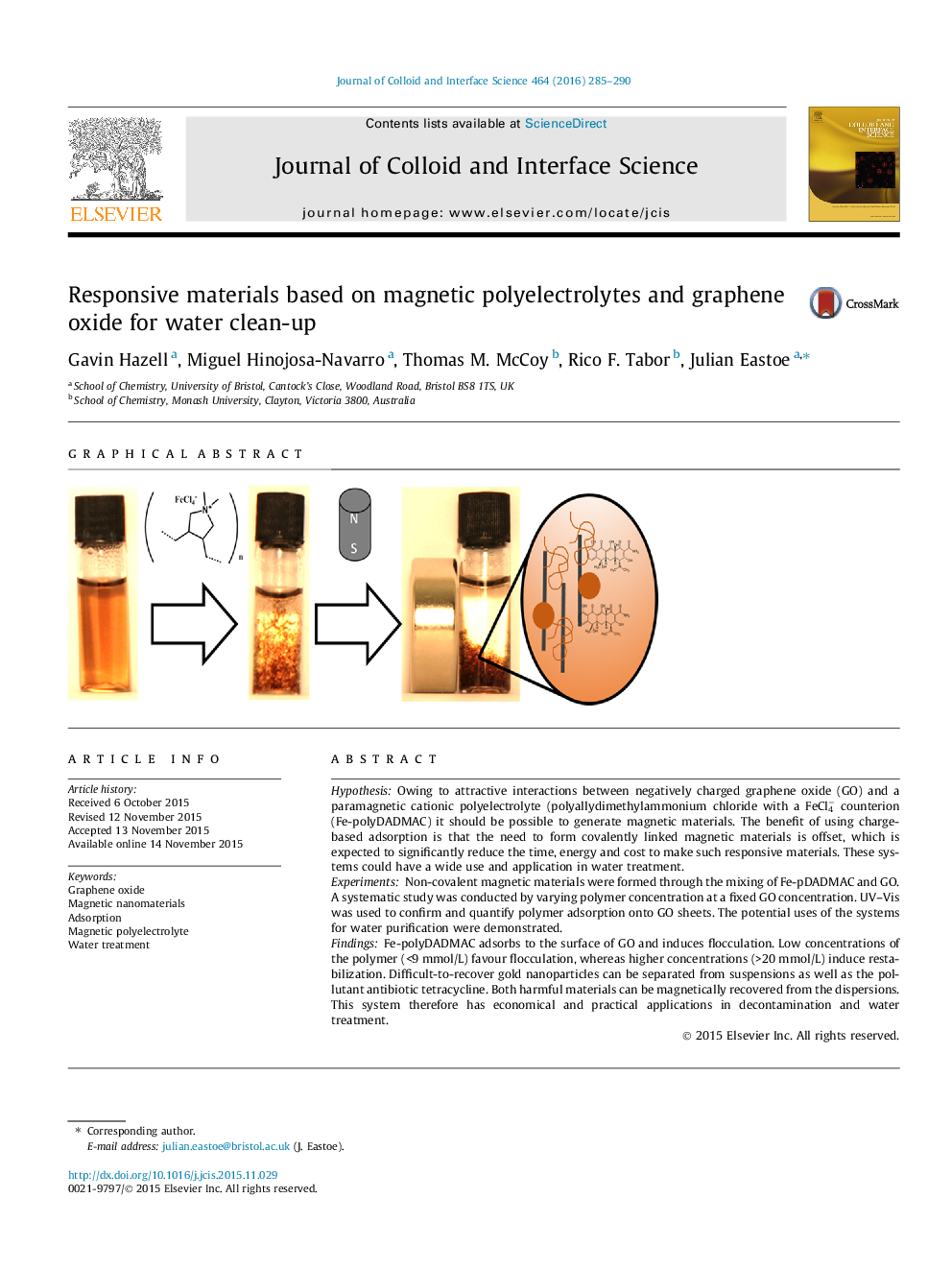| Article ID | Journal | Published Year | Pages | File Type |
|---|---|---|---|---|
| 606439 | Journal of Colloid and Interface Science | 2016 | 6 Pages |
HypothesisOwing to attractive interactions between negatively charged graphene oxide (GO) and a paramagnetic cationic polyelectrolyte (polyallydimethylammonium chloride with a FeCl4− counterion (Fe-polyDADMAC) it should be possible to generate magnetic materials. The benefit of using charge-based adsorption is that the need to form covalently linked magnetic materials is offset, which is expected to significantly reduce the time, energy and cost to make such responsive materials. These systems could have a wide use and application in water treatment.ExperimentsNon-covalent magnetic materials were formed through the mixing of Fe-pDADMAC and GO. A systematic study was conducted by varying polymer concentration at a fixed GO concentration. UV–Vis was used to confirm and quantify polymer adsorption onto GO sheets. The potential uses of the systems for water purification were demonstrated.FindingsFe-polyDADMAC adsorbs to the surface of GO and induces flocculation. Low concentrations of the polymer (<9 mmol/L) favour flocculation, whereas higher concentrations (>20 mmol/L) induce restabilization. Difficult-to-recover gold nanoparticles can be separated from suspensions as well as the pollutant antibiotic tetracycline. Both harmful materials can be magnetically recovered from the dispersions. This system therefore has economical and practical applications in decontamination and water treatment.
Graphical abstractFigure optionsDownload full-size imageDownload high-quality image (186 K)Download as PowerPoint slide
